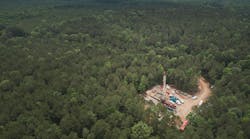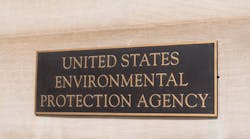Christopher E. Smith
Pipeline Editor
The National Transportation Safety Board (NTSB) Jan. 3 issued seven safety recommendations, six of them classified as urgent, based on its investigation of the Sept. 9, 2010, natural gas pipeline explosion in San Bruno, Calif., which killed eight people and destroyed more than 30 homes. NTSB said its preliminary findings showed operator Pacific Gas & Electric Co. did not have an accurate basis for establishing the pipeline's maximum allowable operating pressure (MAOP).
These conclusions built upon a Dec. 14 update on NTSB's investigation into the explosion which stated that while PG&E records showed the line in the rupture area to be seamless, at least a portion of it was built with longitudinally welded steel pipe, affecting the company's ability to determine MAOP.
NTSB urged PG&E to identify all of its gas lines that have not undergone a testing regimen, to base MAOP on the weakest section of each, and to determine through testing MAOP on any sections for which it could not otherwise establish a safe operating procedure (OGJ Online, Jan. 6, 2010). NTSB also urged the Pipeline and Hazardous Materials Safety Administration (PHMSA) to share its PG&E recommendations with the pipeline industry at large so that operators could proactively implement corrective measures as appropriate for their pipeline systems.
Resistance up
The existing US gas pipeline system is aging, even as rapid growth in shale gas production and growing interest in gas as a fuel for electricity generation spur its continued expansion. Maintenance problems, to say nothing of catastrophes, on older parts of the system increase public concern, skepticism, and even outright resistance to having pipeline segments built. This resistance can slow projects down, both delaying the movement of gas to market and boosting the costs for all involved.
Pipeline operators must proactively manage the public's perception of their industry. But the first step in doing so is maintaining their position as credible advocates. Each instance in which an operator is found to have missing, incomplete, or inaccurate information regarding its own system—be it regarding the condition of a particular line segment or even things as seemingly straightforward as where it lies—damages this credibility.
The Jan. 3 NTSB recommendations are a necessary step in trying to ensure tragedies like the accident in San Bruno last year aren't repeated. Vigorously implementing them, however, also makes good public relations, and through this, financial sense.
The old Fram oil filter commercials featuring the line "You can pay me now, or pay me later" come to mind. Implementing not just the new NTSB recommendations but best-practices maintenance in general costs money. But even in purely fiscal terms, the upfront costs of proper pipeline maintenance likely pale in comparison with the costs imposed not just by the repairs, settlements, and legal proceedings that result when something goes wrong, but with the additional longer-term expenses caused by increased public skepticism and regulatory scrutiny.
Wave your flag
It is, however, likely not enough for pipeline operators to say they're going to implement the recommendations and then quietly and diligently go about doing so. The public, not knowing anything about pipeline engineering, construction, or operation reacts to pipeline failures emotionally. And one of the few things that will help soothe the emotional reaction is being able to see that something corrective is actually being done.
So, pipeliners, wave your flag! Don't just do everything you can to prevent future pipeline-related fatalities, show the people how you're doing it. Otherwise, they really won't have much choice in the event of a future accident to simply assume nothing much had been done since the last one.
More Oil & Gas Journal Current Issue Articles
More Oil & Gas Journal Archives Issue Articles
View Oil and Gas Articles on PennEnergy.com

